Tips on Watering Your Lawn the Correct Way
)
Learn the ins and outs of lawn irrigation and effective watering.
Water Guzzlers
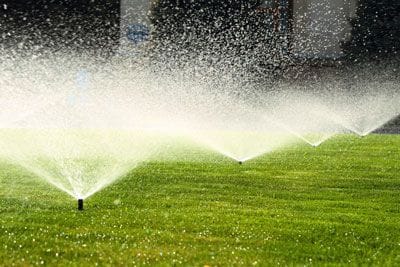
Lawns are water guzzlers. On average, most lawns need 1 to 1.5 inches of water per week to stay lush and green. That water can come from rainfall or irrigation. How often your lawn needs a drink depends on many factors, including things like soil type, sunlight, grass type and regional climate. The list truly goes on and on. In many municipalities, water restrictions are the norm, and lawn watering is high on the list of wasteful water activities. Fine tune your lawn watering skills with these easy irrigation tips.
Hose-End Sprinkler
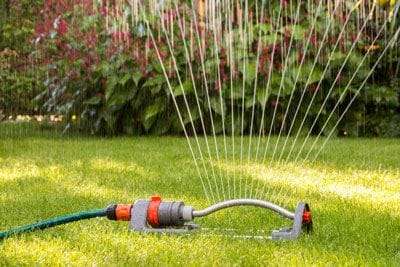
For a small-to-medium size lawn area choose a hose-end sprinkler. Check out different types of sprinklers to find the one that suits your lawn shape best. This traditional sprinkler waters in a rectangular pattern. Don't forget to turn off a manual sprinkler. Set an oven timer to help jog your memory and conserve water. With all lawn watering, deeper, less frequent irrigation is best. This encourages grass to grow deep roots, which is one secret to growing a healthy, low-maintenance lawn.
In-Ground Sprinkler
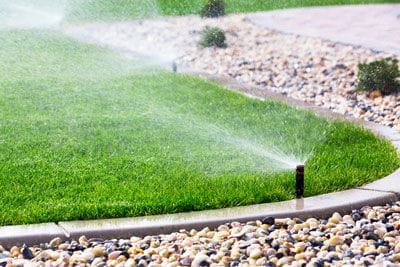
Design an in-ground irrigation system to deliver water in the most efficient way possible. Consider using low-volume, low-angle heads to apply water efficiently. To deliver water as close to the turf as possible, adjust and angle the irrigation heads. This minimizes water lost to evaporation. Observe your system in action. If you spot a mist or even fog coming from heads, that's a sign that system pressure is too high. Make adjustments to reduce the pressure and restore irrigation to streams of water.
Rotary Nozzle
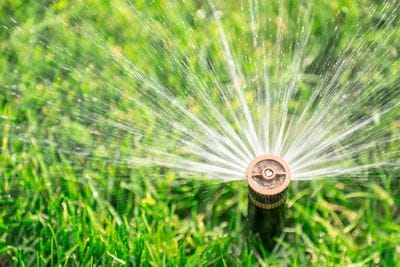
Take a look at new advances in irrigation technology. Rotary nozzles, also called stream sprays or, in some areas, rotators, deliver water to turf in a slow, even stream. Select this type of irrigation head for watering slopes or anywhere you want slow, deliberate water delivery. These nozzles are designed to operate with low water pressure, making them adaptable to homes with water pressure in the 20-to-55 psi range. At high water pressures, rotary nozzles don't revert to mist or fog.
Irrigation Timer
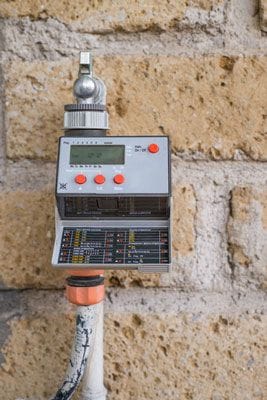
A great time and water saving idea is to include a programmable timer in your lawn irrigation set-up. Explore the world of smart timers, which gauge irrigation schedules based on local rainfall, average temperatures and even the evapotranspiration rate of grass (how fast the grass is actually using water). Set your timer to water during low water-use hours. That typically coincides with a pre-dawn irrigation schedule, which is also ideal for minimizing water loss to evaporation. If at all possible, don't water lawns at night, which makes them more susceptible to disease development.
Soil Types
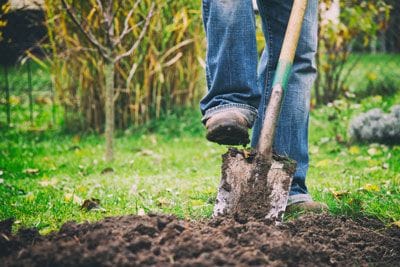
Explore your yard's soil type to make the most effective lawn irrigation decisions. For instance, if you see puddling each time you water, your soil likely has high clay content. This type of soil can't absorb water quickly, but instead requires repeated, shorter watering cycles. On the plus side, clay soil retains water longer than sandy soil, which needs more frequent watering. Adjust irrigation cycles accordingly, take a soil test to learn what kind of soil is hosting your grass.
Measure Sprinkler Output

You can determine how much water your irrigation is actually delivering to the lawn by setting at least six straight-sided containers on the lawn before turning on the irrigation. Tuna fish or god food cans work really well. Run your watering system for 20 minutes. Measure how much water you have in the containers. To get an average, add the amounts and divide by the number of containers. Multiply your average by three and you'll know how much water your system delivers in an hour. Set your watering times based on that knowledge.
Watering on Declines

When watering slopes or hillsides, tinker with irrigation frequency and timing. You'll have best success if you use short watering cycles spaced out over time. Water this area first, for instance, for a brief duration, and then let the system water another spot in the yard while the slope absorbs the water it received. Cycle back to apply another round of water to the slope. Use this same strategy to water clay soils effectively.
Lawns with shade

Grass growing in the shade uses less water than a sun-bathed lawn. In general, you can water shady lawn areas less frequently than sunny ones. The exception, though, is grass growing beneath a tree. In these shady spots, the lawn is competing with tree roots for available moisture. You may need to water these shady lawn areas more frequently than ones that are shaded by a structure. Remember to water deeply to encourage deep grass roots.
New Lawn Sod
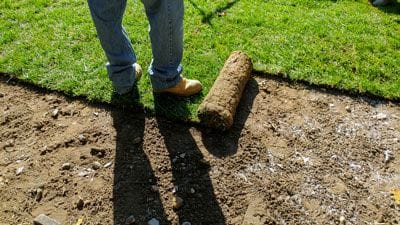
Seeded or newly sodded lawns need more irrigation than established turf. In most cases, water new sod lawns daily for the first week. With sod, taper off watering after the first week to encourage grass to sink deep roots. For seeded lawns, twice daily watering ensures seedling success. Aim to keep that top inch of soil consistently moist. Keep up daily irrigation until you have mowed the grass at least once (twice is even better).
Try not to waste water

Take the time to observe the irrigation system. Note where water delivery is coating hard surfaces, like walks or driveways, or where puddling is occurring on the lawn. Adjust nozzles and irrigation duration as needed to ensure you're making the most efficient use of every drop of water.
Seasonal Settings
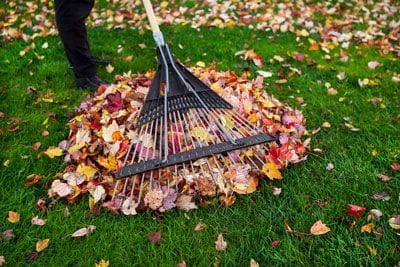
Remember to check and reset your irrigation timer monthly. This is by far one of the most overlooked aspects of a lawn irrigation system. Don't let your system run on summer settings once your region's rainy season arrives. In some provinces, the local extension service or water management authorities posts timer setting recommendations online based on historical weather data.
For any questions on watering your lawn or anything to do with your garden and outdoor needs, please contact the experts at Tree Savvy.
| Tags:BackyardLawn care |


